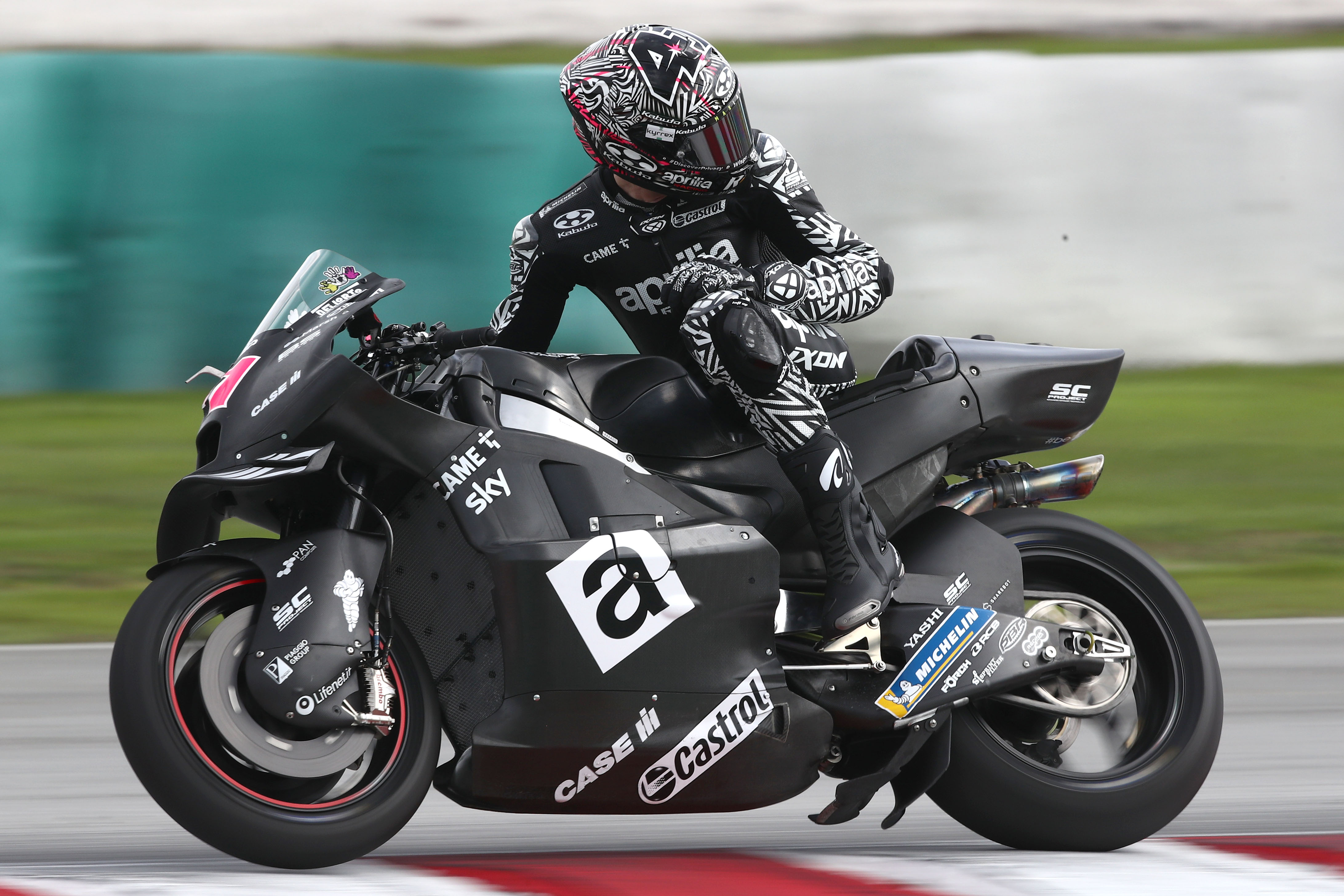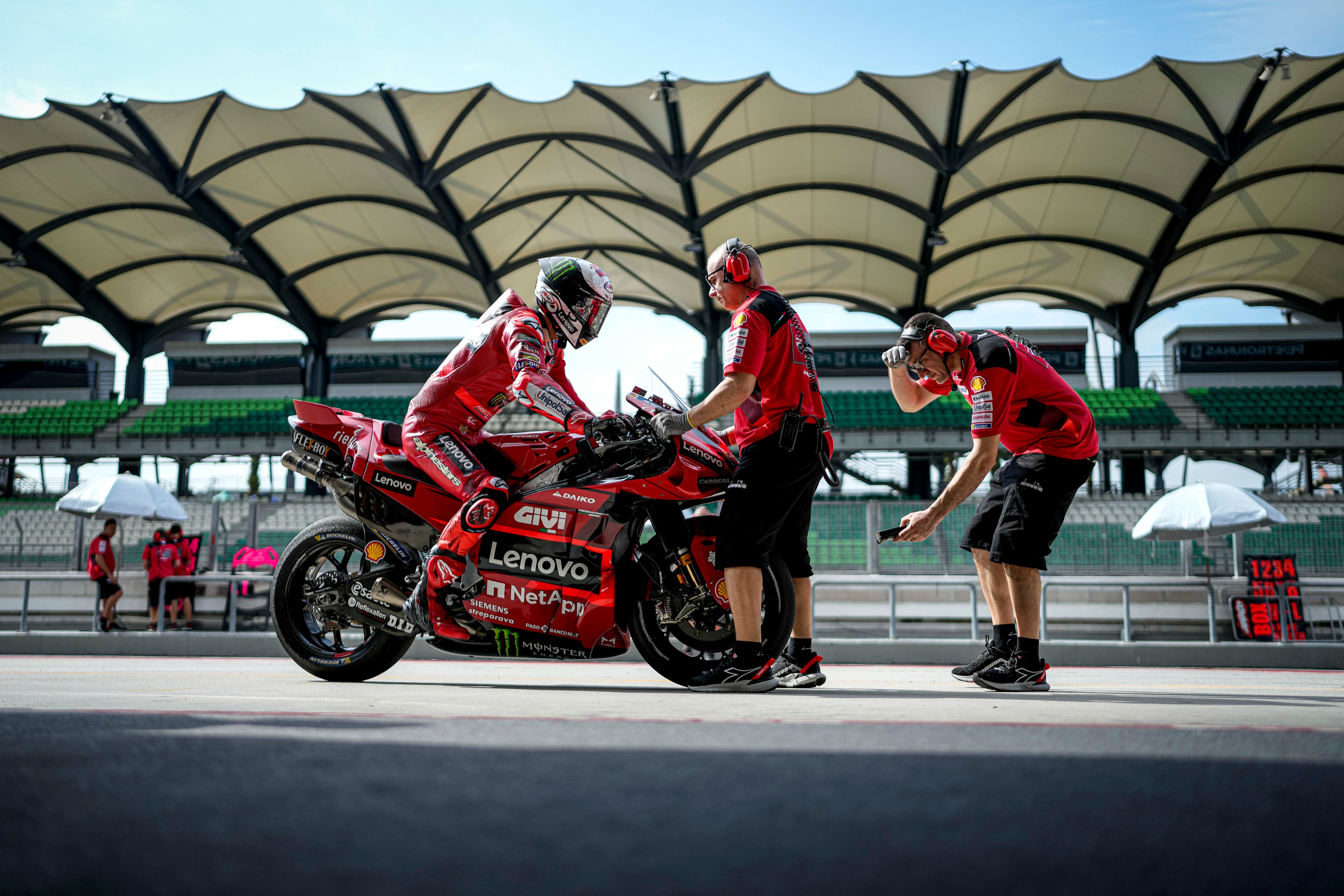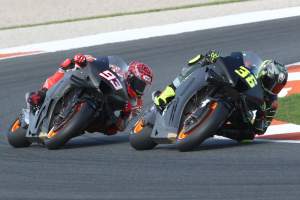Coming into the 2023 MotoGP season, one of the hottest topics has been the potential impact that new rules on enforcing the series’ minimum front tyre pressures will have.
However, with the first test now completed and riders taking time to experiment with what’s going to be required of them, there’s a rising groundswell of opposition to even introducing the restrictions at all when racing gets underway.
Tyre pressure has been a subject on the agenda since the middle of last year when it emerged that some riders, teams and factories were frequently failing to meet the minimum limit imposed by control tyre manufacturer Michelin on safety grounds.
That’s not necessarily the fault of the teams, though, thanks to the unusual situation that the series has found itself in lately thanks to significant technical innovations. The rise of both aerodynamics and ride height devices produces significantly more front load on Michelin’s tyre, meaning that it’s been left scrambling to bring an upgrade that can cope with it.
But, with front tyre development far from an easy thing to do, it’s going to be at least 2024 before we see something more suited to modern MotoGP bikes from the French firm.
And, in the meantime, racers have been left treading a fine line given the way that different types of races can affect their tyre pressure. Essentially, every race is now a gamble: do you put in a high pressure and hope that you’re leading from the front, or do you go low in the expectation of being in a battle with others, where running in the wake of rival bikes will spike your pressure anyway?

Therein lies the problem that the racers are currently facing – and which some of them think might well see the series’ proposed enforcement of the rules later this season not come into play, if they get their way.
As it stands right now, standardised tyre pressure sensors have been decided upon following the Sepang test. Those sensors will be used for the opening three races of 2023, with the results analysed after every race before rule enforcement in theory comes into play for round four (the Spanish Grand Prix at Jerez).
Then, if you’re found to be under the minimum limit (set at 1.88 bar), you’ll lose any laptimes set running below-limit pressures in practice and qualifying – and if more than half your race laps are under minimal pressure, you’ll be disqualified from the results.
That deadline of four races away led to many racers at Sepang paying close attention to their tyre pressure readings. And with riders worried more about what happens when your pressure becomes too high (and renders the bike unrideable) than too low (when the tyre can in theory explosively fail), those in the Ducati camp in particular – although it is known to be a more widespread concern – found themselves being quizzed about it and one after the other all expressed scepticism.
“We still don’t know the lines of the recommendation,” explained VR46 Ducati racer Luca Marini. “It’s still not clear. As riders, we’ve spoken a lot in the safety commission and every rider was against this rule, because it’s a matter of safety, especially when the front tyre pressure goes above 2.2 [bar].”
“It’s really easy to crash then. If you make a race with this level, altogether, it’s impossible to predict. You want to stay in the limit, which in my opinion is a little bit too high. If you stay alone on the track, you’re fine, but if there are two riders in front of you, your pressure will be 2.3 and you risk a crash.”
“Sincerely, could be a problem not just for us but for everybody because if you follow someone it’s more dangerous,” agreed fellow Ducati rider and reigning MotoGP champion Pecco Bagnaia – who said he did a run with tyre pressures above 2 bars and felt good but only because he was running in clean air.

“For me, it’s very very dangerous to go with the tyre pressure very high. ‘Very high’ and ‘not high’, the difference is very low, very small – you just need 0.02 and maybe the tyre starts to be a little bit in trouble,” cautioned the pair’s fellow Valentino Rossi protege and Marini’s VR46 Ducati team-mate Marco Bezzecchi – who admitted he was hoping the rule would fall through.
Marini continued: “I want to speak with all the other riders, with the manufacturers, with Dorna, with Michelin, to understand this new rule. In the first three races, we have the opportunity to try it, to stay in the correct amount of pressure, but it’s not easy because it depends if you start in the front row or the back.”
Gresini Ducati newcomer Alex Marquez said: “I think last year in Australia if this rule was in [place], I think like 13 riders would’ve been disqualified. Something like this.
“Because you never know, in the race, where you will be. Also being too low on the front is no advantage. It’s what they need to understand. I think [for] the front, I think they will not do [the rule].
“The front one, honestly, for me makes no real sense. The rear one, I totally agree [with enforcing it].”






